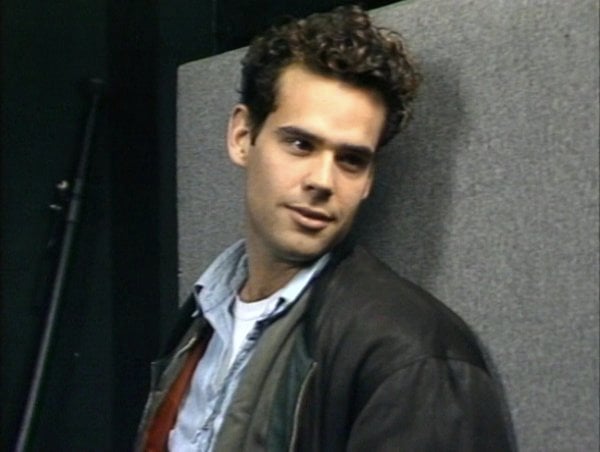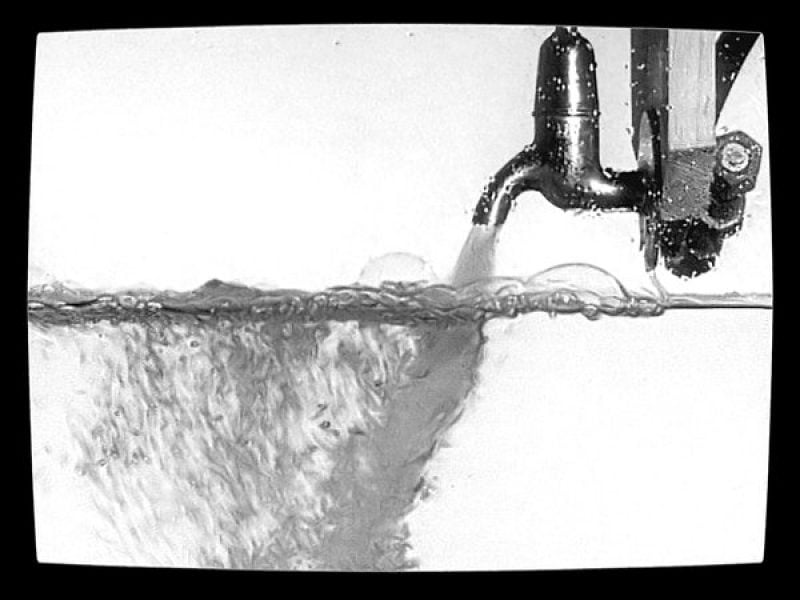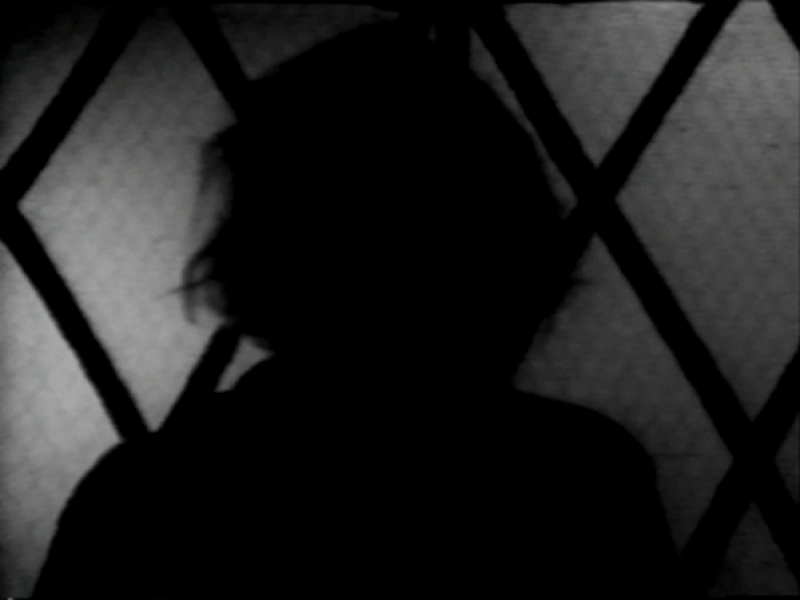LUX artists in residence Nicole Bachmann and Ruth Beale (Performance as Publishing) discuss unexpected relationships in their film programme from Take Two, and whats to come in Take Three.
Nicole Bachmann (NB): Take Three is approaching fast and it’s interesting to look back at what we’ve shown so far and what we’ll show on 6th of May. Although when programming the films we imagined how they could work alongside each other, in Take Two I was surprised by the fact that there were subtle connections and similarities between the separate elements in our eclectic selection, which we hadn’t foreseen. David Hall’s Interruptions were steady companions and delightful remarks upon TV/broadcast. Louis Henderson’s All that is solid (2014), a political film about computer waste illegally exported from Europe to West Africa, explores the construction and deconstruction of the film and its content by combining its edit and assemblage on a computer into the film itself. He makes visible what usually occurs privately in a studio; the making of the film is performed to the eye of the audience.
Ruth Beale (RB): It was instructive to think of all the various things that were ‘performing’ in the films, from the film’s material in Lis Rhodes’ Dresden Dynamo (1971), the sculptures and soundtrack in Mark Leckey’s The March of the Big White Barbarians (2005), to the de-construction of its creation in Louis Henderson’s All That is Solid. In Rachel Reupke’s Containing Matters of no very peaceable Colour (2009), which we will be showing on Friday, the objects themselves perform. The computer-generated narration gives the feeling of detachment from the bodily, or human, and introduces an anxiety-ridden world of consumer product, advertising and manipulation.
NB: In Take Three, we’ll also show Kim Wilde Auditions, a Cerith Wyn Evans film from 1995. Wyn Evans found the footage in a bin in Soho and assembled it together into a showreel. It’s absolutely amazing and feeds well into the questions that have been raised about gender and sex by the performances by Eddie Peake and Marie Toseland & Sophie Mallett from the previous Takes. Kim Wilde Auditions is pure performance of the sexual object and the desire engendered, performed to the gaze of the audience.
RB: I enjoy how it’s an accidental performance, or accidental artwork, as the male subjects are performing for one purpose: the stills camera and their auditions for a Kim Wilde video, as they respond to the instructions of an off-screen director. But watching their performances is really embarrassing and disturbing. In opening up this intimate interaction to a wider audience, Wyn Evans identifies us, the viewer, and makes us consider our position as the voyeur.
NB: We haven’t talked much about the gaze, which is so important in cinema theory. Describing our project as ‘performance to camera’ really points to the idea of a performance mediated through a camera and an audience who only sees that end product. It implies conscious decisions about what the camera sees and how this translates to an online audience. At the same time, during the live performances at Eastside Projects we’ve had a live feed projected onto the wall of what the camera sees. So we’re trying to bring the two together and make the gap between the live and the broadcast visible for the live audience.
RB: Just one last film that I wanted to mention that we didn’t screen – Beatrice Gibson’s A Necessary Music (2008) which deals with representation in a filmic way. Describing itself as a “science fiction film about modernist social housing” it tells the story of a place, Roosevelt Island. Moving from realism to imagined narrative, it weaves in narration by Robert Ashley and performances by residents of a modernist estate. As a fully-fledged film, it didn’t feel right to screen it alongside works which were much more raw and live, but I think it’s a useful marker to think about how concerns of Take One / Take Two / Take Three are a kind of condensed, intense version of ideas which echo through wider film and artistic practice.
Performance as Publishing is an independent practice-based research project led by Nicole Bachmann and Ruth Beale. It explores, through their own and other artists’ practice, the relationship between the written word (archival material, found texts, fiction and art writing) and exhibition-making, audio and performance. Many of the invited artists deal directly with the subject of text and language, others use it more formally to explore different thematic concerns. Each project defines a strain of practice emerging in London, the UK, and internationally, as can be seen on the Research pages.
Take One / Take Two / Take Three is a broadcast project by Performance as Publishing hosted at Eastside Projects and broadcast by This is Tomorrow. Over three events, nine new artists’ performances will be staged to camera for broadcast in the presence of a live audience. The series plays with the transposition of ‘liveness’ and the event in a digital context through framing and editing. Over the three events the works will put forward different takes on repetition, transformation and accumulation.
Take Three takes place on the 6th of May at 7:00pm at Eastside Projects and will be broadcasted live on the This Is Tomorrow website.





